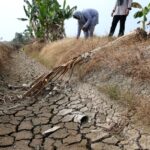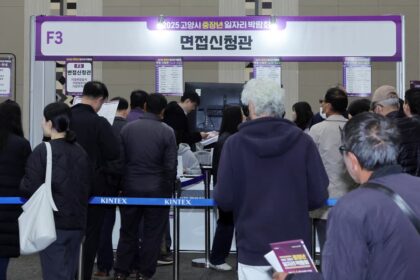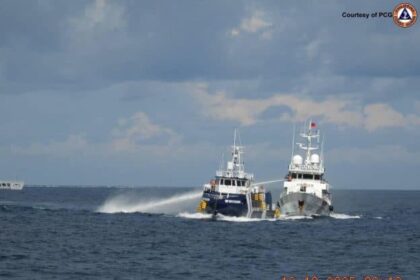Battle lines harden as diplomacy shifts
Four years after the February 2021 coup, Myanmar’s civil war is settling into a harsh new phase. The anti-junta coalition of ethnic armed organizations and People’s Defense Forces still controls large swathes of borderland and some parts of the Bamar heartland. Yet the front has crystallized into zones of control and supply, and prospects for toppling the military in major cities look distant. Even as the army struggles on several fronts, the generals are discovering fresh diplomatic room across the region, aided by a global tilt toward hardline governance and a fragmented international response.
- Battle lines harden as diplomacy shifts
- Where the war stands now
- China backs stability, not victory
- Russia’s role and the air war
- Regional engagement and quiet normalization
- Elections planned, legitimacy challenged
- Humanitarian crisis and accountability efforts
- The political economy of rare earths and borderlands
- Can the opposition take the cities?
- Key Points
Senior General Min Aung Hlaing has reaped the benefits. He secured invitations and meetings in Thailand, China and Russia, and appeared at major regional gatherings, including a Shanghai Cooperation Organization summit. Chinese state media has moved from calling him Myanmar’s leader to describing him as acting president. Russia and China continue to supply aircraft, drones and spare parts that feed an air campaign the army relies on to offset manpower and morale problems. Meanwhile, Washington’s narrower focus and cuts to independent broadcasting in Burmese have thinned the space for free media.
Fighting remains fierce. Independent conflict trackers estimate the military fully controls only a small share of the country, with large areas contested and opposition-held. More than three million people are displaced and needs have spiked after a deadly March 2025 earthquake that ripped through central regions, including parts of the Bamar heartland. While ethnic alliances chalked up battlefield successes in 2024, Beijing’s pressure reversed some of those gains in 2025 and pushed several groups toward ceasefires or retrenchment. The shape of the conflict now points to a fractured Myanmar, with borders of convenience hardened by supply lines, terrain and foreign interests.
Where the war stands now
From northern Shan to the western coast, the map has shifted in fits and starts since late 2023. Ethnic alliances swept across parts of northern Shan in 2024, briefly seizing Lashio and threatening the vital trade route from Mandalay to the China border. In Kachin State, the Kachin Independence Army (KIA) took control of rare earth mining hubs near the Chinese border, then negotiated cross-border trade in early 2025 that allowed exports to resume under a fixed tax per tonne of concentrate. Those moves highlighted both the leverage and the limits of anti-junta forces.
Beijing soon applied pressure. In April 2025, the Myanmar National Democratic Alliance Army, part of the Three Brotherhood Alliance, ceded Lashio back to the junta under Chinese insistence. China also leaned on the United Wa State Army to step back from direct military support to allies. Since then, the military has reclaimed several northern Shan towns along the Mandalay–Muse corridor, including Nawnghkio, Kyaukme and Hsipaw. The army’s path back has been uneven. Forced conscription announced in 2024 sparked flight and anger, and frontline morale remains fragile.
On the western front, the Arakan Army controls much of Rakhine State. A junta garrison at Kyaukphyu, home to the oil and gas terminals that anchor Chinese energy projects, has faced siege conditions. The risk of Chinese security involvement rises if critical infrastructure faces real danger. Across the country, difficult ground, local support for resistance forces and a constant adaptation of drone tactics impose heavy costs on the junta’s attempts to push deeper into opposition-held areas.
China backs stability, not victory
China’s approach rests on a simple calculation. A total collapse in Naypyidaw would threaten trade, pipelines and border security. Beijing has increased engagement with the generals and stepped up material support. Analysts tracking arms and financing say recent Chinese aid packages include aircraft, drones, parts and money for state projects, including a census and planned polls. Chinese authorities have also tightened control of cross-border trade and dual-use technology, a move that raises the costs for resistance groups sourcing components abroad.
Even so, Beijing’s objective appears limited to preventing a collapse and shaping any eventual settlement to protect core interests. The resistance controls many rural arteries and some key crossings. The KIA’s rare earth arrangements underscore China’s reliance on ethnic authorities for critical mineral supply, even as Beijing backs the central military in other areas. China has at times shut the border to force ethnic forces to negotiate, then reopened trade when deals were in place. That mix of pressure and pragmatism has not delivered a decisive advantage to the junta. It has, however, constrained opposition momentum and helped the military shore up certain corridors.
China’s law enforcement cooperation with the generals has also evolved. After pushing for action against border scam syndicates that targeted Chinese nationals, authorities celebrated repatriations and joint crackdowns. Many of these criminal networks persisted by shifting to foreign victims. The spread of these scams highlights how state interests, militant patronage and transnational crime can feed off each other in a security vacuum.
Russia’s role and the air war
Russia remains the junta’s most dependable arms pipeline. In 2025, the military introduced new Russian helicopters and Chinese transport aircraft into service, highlighting a reliance on air mobility to compensate for ground losses. The air force uses heavy ordnance, including against civilian targets. This approach has blunted some resistance advances, yet at high human cost and with limited ability to hold terrain.
Both sides have adapted drone warfare lessons from other conflicts. Resistance units built local capacity to produce and modify drones, integrating them with intelligence and small unit tactics. The junta has matched these efforts with imports and technical assistance. China’s tighter restrictions on dual-use exports make it harder for opposition groups to acquire key components, but ingenuity and cross-border networks have kept their drone campaigns alive.
Air power alone does not produce decisive outcomes in a country of mountains, forests and river valleys. The military can strike, disrupt and punish. Turning airstrikes into durable control requires infantry, logistics and legitimacy. Those elements remain in short supply for the junta beyond core urban centers.
Regional engagement and quiet normalization
India, Thailand and other neighbors have recalibrated. New Delhi seeks stable relations with whoever holds Naypyidaw, while managing a frontier dotted with anti-junta actors. Indian officials have shown interest in rare earth supply from northern Myanmar and have engaged on electoral logistics. Moves by India to participate as observers in planned polls risk conferring a democratic veneer on a process critics say cannot be credible while opposition parties are banned and fighting continues.
Thailand has kept trade links open and expanded contact after years of cross-border disruptions. ASEAN’s Five-Point Consensus remains the main reference at the regional level, yet enforcement is thin. As regional normalization creeps forward, coordinated pressure is harder to sustain. The result is a patchwork of bilateral gestures that the generals present as acceptance.
The United States has reduced attention and trimmed support for Burmese-language public media. The gap in international broadcasting and the lack of a unified sanctions strategy leave room for the regime to maneuver. Sanctions from Canada, the European Union and others continue, but they are not backed by a regional consensus that would cut off the military’s main suppliers.
Elections planned, legitimacy challenged
The junta plans a multistage vote starting in late December 2025, with further phases scheduled in January. Authorities have banned dozens of parties, jailed prominent opponents and passed a new law that criminalizes a wide range of speech and activism related to the polls. Voting will not take place nationwide, a tacit admission of insecurity and loss of control. Human rights groups say the process cannot be free or fair under these conditions.
International election experts have urged governments to deny support to any process run by the military while jailing of opponents and violence continues. Their argument is that technical fixes do not substitute for basic rights, open competition and safety for voters and candidates.
Human Rights Watch has framed the planned vote as a bid to dress up military rule for outside audiences. The group warned that giving the process any diplomatic validation would come at the expense of rights and accountability.
United Nations officials have echoed that concern. At a recent regional summit, UN leadership questioned the credibility of holding any election amid ongoing war and repression.
Introducing the organization’s view, Human Rights Watch said the polls should not gain international backing because of systematic repression and exclusion. The group stated:
Foreign governments should reject the Myanmar junta’s plans to hold elections from late December 2025 through January 2026 because they will not be free, fair, or inclusive.
International IDEA, an intergovernmental body focused on electoral integrity, delivered a similar warning in a joint declaration by democracy experts. After noting that opposition parties and media face severe restrictions, the statement concluded:
We unequivocally reject plans by Myanmar’s illegal military junta to hold a so called election in 2025.
UN Secretary General Antonio Guterres has taken a clear position on the question of credibility. His office said that in the absence of a real path to civilian rule, confidence in the process is absent. As his public comments summarized at an ASEAN gathering indicated:
Nobody believes those elections will be free and fair.
Humanitarian crisis and accountability efforts
Myanmar’s humanitarian emergency deepened after the March 28 earthquake, which caused mass casualties and destroyed key infrastructure in central regions. While both the military and some resistance groups announced temporary ceasefires to allow aid flows, reports from the ground pointed to continued air and artillery attacks in several areas. The toll of the conflict and the quake has strained local responders and pushed needs beyond the capacity of many aid agencies.
Canberra increased support through vetted partners to avoid bolstering the regime. In a public statement, Foreign Minister Penny Wong condemned military strikes in quake zones and set out the government’s approach. She said Australia would keep backing relief without conferring political recognition on the military. As she put it:
We take proactive steps to ensure our assistance does not legitimise the military regime in Myanmar.
Ottawa also tightened pressure with another round of sanctions on senior officers and military-linked entities. The Canadian government urged a broader coalition to stop financial and operational backing for the regime. The statement conveyed a direct appeal:
We call on the international community to suspend all operational and financial support to Myanmar’s military regime.
Rights organizations argue that accountability is advancing, though slowly. In November 2024, the prosecutor at the International Criminal Court requested an arrest warrant for Min Aung Hlaing related to crimes against the Rohingya in 2017. Advocates want the court and the UN Security Council to expand the scope to cover atrocities since the 2021 coup. Human rights monitors have documented thousands of killings, mass detentions and repeated airstrikes on civilian targets, including schools, hospitals and places of worship.
The political economy of rare earths and borderlands
Critical minerals have become a central thread in Myanmar’s conflict. Rare earth mining near the Chinese frontier is now a revenue source and a bargaining chip. After taking two key mining towns in late 2024, the KIA negotiated the resumption of cross-border deliveries. A per tonne levy on concentrate provides income and entrenches local control over extraction and regulation.
India and the United States have signaled interest in diversifying rare earth supply chains. The reality on the ground makes this exceedingly hard. Mines operate in contested zones, logistics are unstable, and environmental damage is severe. Any arrangement that skirts local authorities invites disruption. Deals also risk bankrolling armed actors and tying buyers into the conflict economy.
Beyond minerals, entrenched criminal enterprises exploit gaps in state control. Border scam syndicates that once preyed on Chinese nationals have pivoted to foreign victims across Asia, North America and Europe. Joint crackdowns have pushed some operators out of one zone only for them to reappear elsewhere. The persistence of these networks shows how a prolonged war can incubate organized crime that reaches far beyond Myanmar’s borders.
Can the opposition take the cities?
Resistance units excel at mobile warfare in difficult terrain, supported by local communities and diaspora funding. Holding major cities requires a different mix of resources: sustained logistics, air defense, administrative capacity and service delivery. The military retains advantages in heavy weapons, aircraft and centralized command. Even with losses, it can mass force, cut supply lines and punish any attempt to concentrate resistance units around large urban areas.
Opposition governance has made strides in areas outside junta reach. In some territories, schools, clinics and basic administration now run under local authorities linked to ethnic movements or the National Unity Government. Those structures demonstrate capacity, yet they do not easily translate into an urban takeover while the army maintains strongholds and controls national institutions.
Regional diplomacy reinforces this stalemate. China is unlikely to accept a sudden opposition seizure of core cities that threatens strategic assets. Russia will continue selling the tools that keep the air war going. India and Thailand will prize stability along their borders. Without a sharper, unified international approach, the most probable outcome is a long conflict with de facto borders and a fragmented state.
Key Points
- Battle lines have hardened into zones of control, making a decisive opposition push into major cities unlikely in the near term.
- China has expanded military and financial support to prevent regime collapse, while pressuring ethnic forces and shaping cross-border trade.
- Russia supplies aircraft and equipment that sustain the air war, but air power has not translated into durable control on the ground.
- India and other neighbors have increased engagement with the junta, with some actions risking unintended legitimacy for planned polls.
- The junta plans phased elections starting December 28, 2025, which rights groups and election experts say cannot be credible under current conditions.
- Humanitarian needs soared after the March 2025 earthquake. Australia boosted relief while pledging to avoid legitimizing the regime, and Canada imposed new sanctions.
- Accountability efforts gained traction with an ICC warrant request for Min Aung Hlaing related to 2017 crimes against Rohingya, with calls to widen the scope to post-coup abuses.
- Rare earths and border crime are reshaping the conflict economy, giving local authorities leverage and fueling transnational scams.
- Without coordinated regional and global pressure, Myanmar is likely to remain fragmented along military and administrative fault lines.












